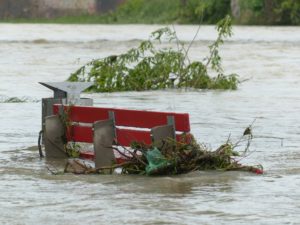
It seems Federal Emergency Management Agency (FEMA) maps have sprung more than a few leaks, much to the chagrin of homeowners like Michael Wilson.
A couple of years back, the 43-year-old purchased a brick bungalow on Chicago’s South Side. He did his homework, reviewing the home’s flood risk with a fine-tooth comb, and the home’s unfinished basement bore no obvious signs of water damage, according to a report from ProPublica, which appeared in Big Easy magazine.
Additionally, the real estate agent had been unaware of a flood history while the home was on the market, and Wilson had hired a waterproofing specialist to inspect the property for indications of previous flooding or structural damage. Yet, only two months after he purchased the home, zap; it flooded.
Turns out the home is outside a FEMA special flood hazard area, stated the report. Meaning Wilson wasn’t required to have flood insurance. Yes, there was some coverage for sewer backups in his home insurance policy. The catch was, it didn’t begin to cover the damage to his home.
While it’s up to FEMA to flag to high-risk zones where homeowners with federally backed mortgages are required to buy flood insurance, its maps are famously known for their incompleteness. Yes, they pick up on some flooding from rivers and other coastlines, when it comes to heavy rainfall, they score a near 10 for missing the boat. Not good, since urban development and climate change have further exacerbated the problem.
The report said homeowners beyond FEMA’s high-risk zones have a false sense of security.
Homeowners outside of FEMA’s high-risk zones often believe they’re safe, underestimating their vulnerability. Then, once a flood hits, they must pay out-of-pocket for water damage, since they weren’t made to buy flood insurance.
Flood damage hits taxpayers in the pocketbook as well. In the aftermath of major disasters, the underinsured receive limited government assistance. Agencies such as the Department of Housing and Urban Development provide long-term recovery funds.
A total of 8,7 million properties are situated in areas prone to a “hundred-year flood,” according to FEMA. A “hundred-year flood’s” a flooding event with a 1% chance of occurring each year. There are 14.6 million properties at risk, the new data states.
A comprehensive new assessment of flood risk, released this week by the nonprofit First Street Foundation, exposes blind spots in FEMA’s maps to show just how vulnerable the nation’s properties are. Built by researchers from private companies and universities, the model calculates the cumulative risk for every property in the contiguous United States from rainfall, storm surge, tidal, and river flooding. The new data says there are 14.6 million properties at risk.
In an April report from FEMA and the Office of the Flood Insurance Advocate, the agency detailed its planning to cut back the complexity of the National Flood Insurance Program, according to DSNews,.
“FEMA’s strategic goals established in 2018 remain in place to build a culture of preparedness, ready the nation for a catastrophic disaster, and reduce the complexity of FEMA programs, particularly the NFIP,” said David Stearrett, FEMA Flood Insurance Advocate.

 DSNews The homepage of the servicing industry
DSNews The homepage of the servicing industry










